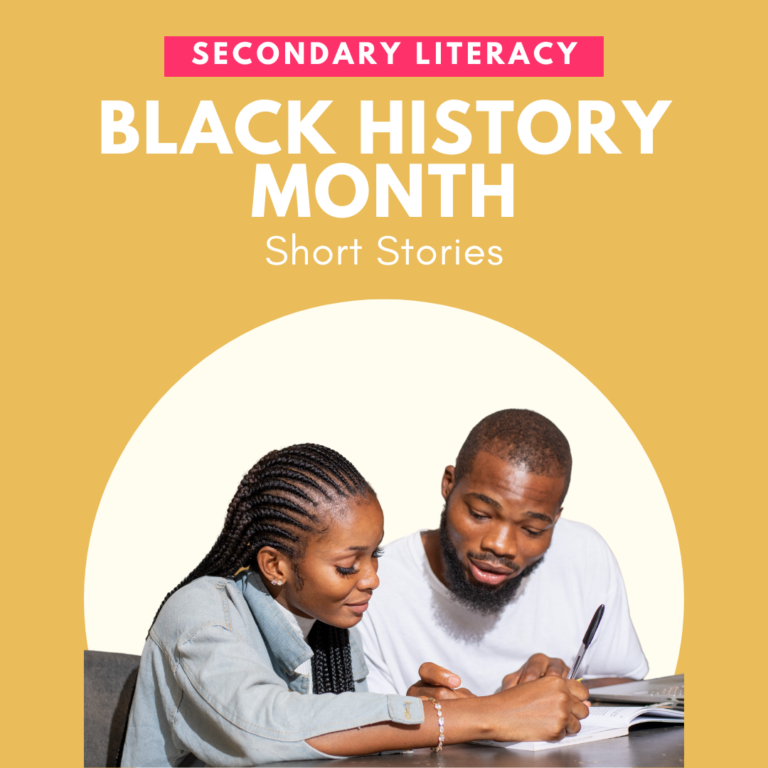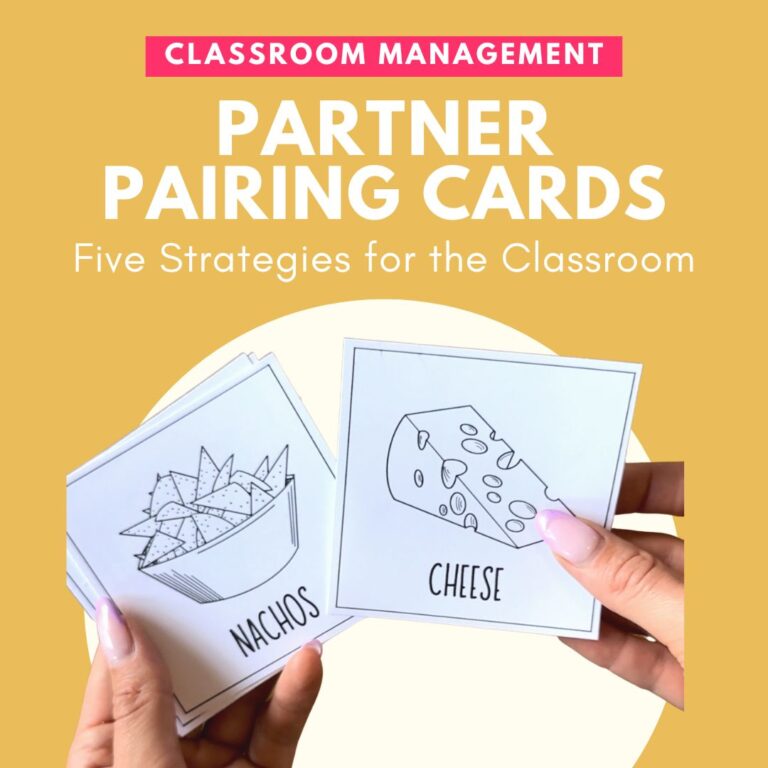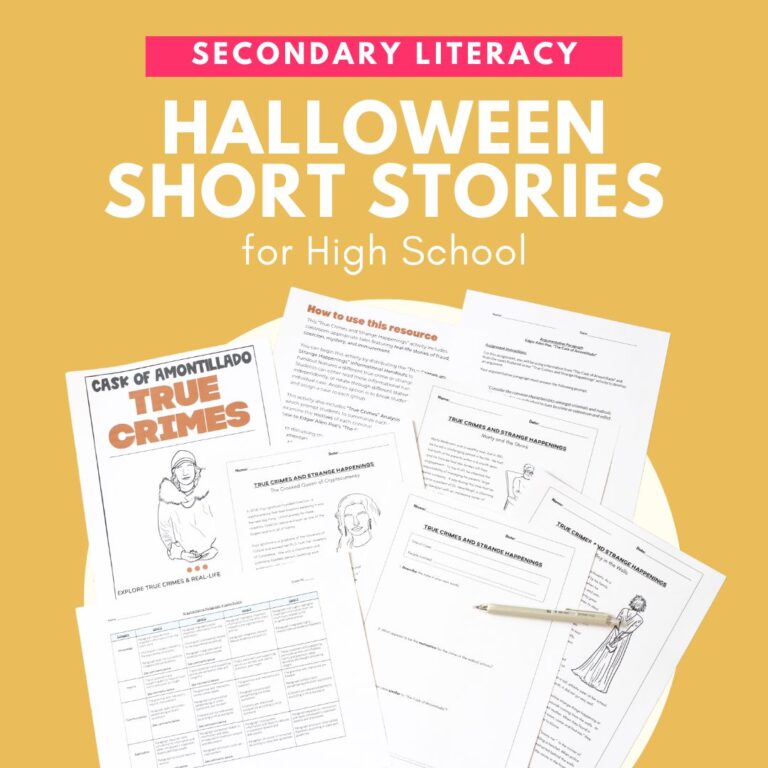Teaching the Ontario Literacy Course (OLC) can be a rewarding yet challenging experience for educators. In this post, I’ll share how to make the process smoother and more effective for both you and your students. Let’s dive into practical tips that will help you foster literacy skills in an engaging and supportive way.
Is your department or school board interested in licensing curriculum for the Ontario Literacy Course? Explore how you can provide these valuable resources to your students by clicking here.

What is the Ontario Literacy Course (OLC)?
The Ontario Secondary School Literacy Course, also known as the OSSLC, explores a variety of cross-curricular literacy skills. These skills prepare students for the literacy demands that they will face in the modern world. It is a full-credit course offered in Ontario to secondary students.
Although the Ontario Literacy Course evaluates the same literacy skills that make up the Ontario Secondary School Literacy Test (the OSSLT), the course and the test are not identical. This test is designed for students who need a different path to demonstrate their competence in literacy. It therefore utilizes an alternate approach to evaluating these cross-curricular skills.
Why is the Ontario Literacy Course necessary?
Literacy is key to success in school, work, and everyday life. The OSSLC provides vital support for students who have attempted the OSSLT but were not successful. By focusing on essential reading and writing skills, the program provides additional support to ensure students’ success after graduation. By breaking down the processes of reading and writing, the course strengthens students’ literacy skills, boosts their confidence, and prepares them for the workplace.
To be eligible for the OSSLC, the Ontario Curriculum indicates that “students who have been eligible to write the OSSLT at least twice and who have been unsuccessful at least once are eligible to take the course” (Ontario Ministry of Education). If a student who has passed the OSSLT wishes to take the course due to specific circumstances, the principal may use their discretion to offer this option.
How does a student pass the Ontario Literacy Course?
Passing the OSSLC means achieving a grade of 50% or higher in the course. The grade comprises 70% from ongoing evaluations throughout the course and 30% from a final reading and writing evaluation. These assessments mirror the standards of the OSSLT, requiring students to independently demonstrate their literacy abilities.
A successful score on the OSSLT is one way to meet the literacy requirement to receive a high school diploma in Ontario. The other is the Ontario Literacy Course. Students who are eligible for the OLC are therefore required to obtain this credit or attempt the OSSLT again in order to graduate.
How hard is the Ontario Literacy Course (OLC)?
The difficulty of this course varies based on the student’s literacy level. Since the Literacy Test assesses skills taught in the Ontario curriculum from grades K-9, not all students may possess every required skill. Newcomers, English Language Learners, and students with learning gaps are at risk of not succeeding on the test.
Fortunately, the OLC is tailored to support a wide range of skills. Through differentiated instruction, learning supports, and additional instructional resources, students with significant gaps in their education can find success in the course. The literacy portfolio is one component of the course that reflects the student’s progress as they enhance their reading and writing abilities.
My goal in sharing about the OLC is to help you design a course that engages students using high interest topics and age-appropriate content. The lessons and activities discussed in this blog post are designed to cultivate practical skills that students find valuable. Engaged students who see value in their learning are more likely to find success in the course.

Teaching the Ontario Literacy Course
Making Reading Relevant
According to the Ontario curriculum, “the competent reader is able to read informational, narrative, and graphic texts with reasonable accuracy and proficiency, to understand directly and indirectly stated ideas and information, and to make connections between texts and his or her own experiences and knowledge” (Ontario Ministry of Education).
To build reading skills in the classroom, teachers can model a variety of reading strategies and practice identifying and interpreting a variety of texts. Students can learn explicitly about information text features through engaging activities like gallery walks, scavenger hunts, and review games. These activities utilize independent learning strategies to challenge and empower older students.
Through reading about age-appropriate topics that students value – like personal finance and branding – students can practice summarizing nonfiction texts through the support of strategies like the “TMST method.” These reading passages include nonfiction articles and a graphic organizer to guide students through the TMST method.
Students can then compare information texts with narrative texts to identify common features and contrast these different forms of writing. By looking at different real-life narratives, students can explore Canadian figures like Roberta Bondar and Billy-Ray Belcourt. They can also learn about topics that are relevant for post-secondary pathways.
Building Writing Skills
Writing instruction is one area of the course that sets it apart from the OSSLT. “Unlike the OSSLT, which specifies the topics students write about and the forms of writing they produce with limits on the time allowed for writing, this course gives students regular, ongoing experience in using the writing process to produce and craft their writing, and allows them to choose some of their own topics and writing forms to suit their own purposes” (Ontario Ministry of Education).
To meet the course’s writing requirements effectively, I’ve found it best to focus on authentic learning opportunities. Students find these activities to be practical because they mirror real-life writing tasks. This enables students to apply their skills in meaningful and relevant contexts.
Project-Based Writing Activities for the OLC
One writing assignment that students love is a community interview project. Through the use of interviewing skills, students can demonstrate their understanding of real-life narratives by capturing the story of someone within their school community.
Based on Brandon Stanton’s famous photography project, Humans of New York, this Humans of My High School project has students use the W5-H Framework to share a narrative about a member of your school community. This project is a beautiful way to breathe life into those hallway bulletin boards!
Another exciting option to teach writing is to host a classroom debate. This project is sure to get your students fired up while they practice persuasive writing skills! Even though the debate is an oral activity, it draws on the same skills as the opinion essay on the OSSLT. This is because students need to develop main points and evidence to build a strong case.
Students can collaborate to prepare their debate outline. Through the writing process, they will plan their arguments and provide team members with feedback to revise their delivery and ensure that their case is as strong as possible. After the debate, students can continue with the writing process by using these outlines to write an opinion essay.
As a culminating activity, you can practice various forms of writing by having students plan a vacation. This project-based learning opportunity is perfect for those long winter months! Students can begin this project by thinking about a place they’d like to visit. Students can then plan their daily itinerary and use graphic texts to illustrate their trip timeline or vacation budget. You can even have students practice narrative writing by crafting daily journal entries during their trip.
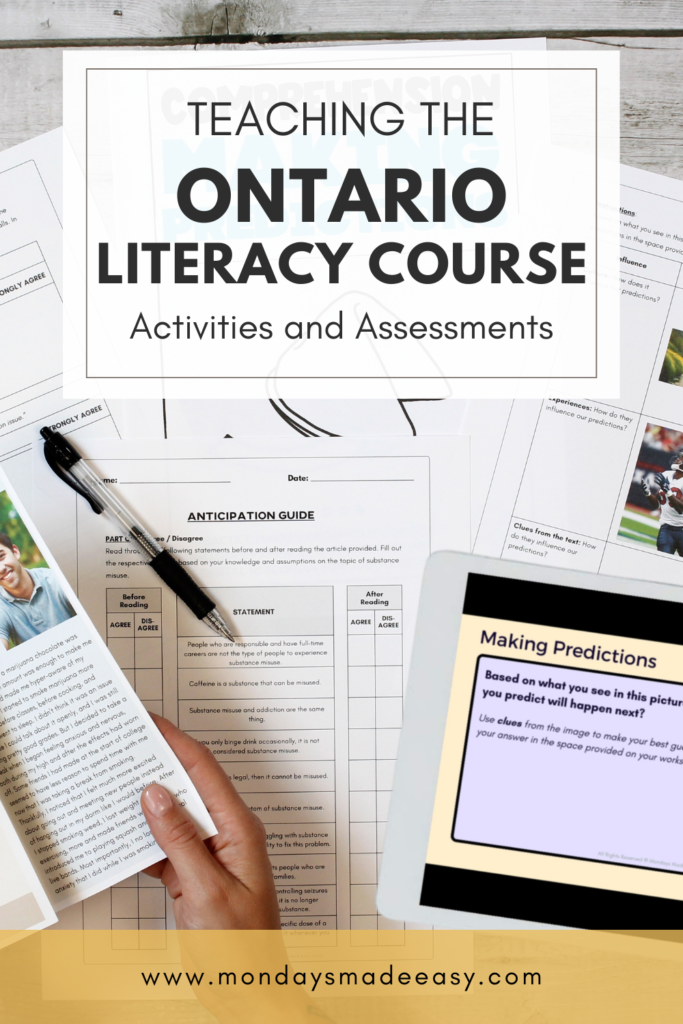
Assessment in the OLSSC
In the Ontario Literacy Course, student assessment is designed to align with the literacy skills evaluated by the OSSLT. The final grade for the course is determined by two components:
Evaluations During the Term (70% of the Student’s Grade)
The assessments in the Ontario Literacy Course consist of a mix of reading and writing tasks. Some tasks should be chosen by you and some by the students. It’s important to space these evaluations out throughout the term, and they should reflect the students’ own understanding and skills. When it comes to reading, each student needs to show they can grasp at least two narrative texts, four graphic texts, and five informational texts that you’ve picked out.
As for writing, they’ll need to create various pieces on their own. These pieces include a summary, an information paragraph, two opinion pieces, and two news reports All pieces should be based on topics that you provide. You can use the following rubrics to evaluate writing for the OLC.
How you weigh each grade within your gradebook is dependent on your school board and department. Be sure to check with your department head for further information on assessment.
Final Evaluation (30% of the Student’s Grade)
The final evaluation is a culminating task that will showcase the reading and writing skills that students have honed over the course. This evaluation shouldn’t just mimic the OSSLT; instead, it should give students a chance to apply the reading and writing techniques they’ve learned.
For the reading section, students will analyze a text chosen by you and answer questions to show their comprehension and ability to connect the text to their own experiences. In terms of writing, they’ll summarize a selected text and write an informational paragraph on a topic you assign. Additionally, students will reflect on their progress in reading and writing by reviewing their literacy portfolio.
Accommodations specified in a student’s Individual Education Plan (IEP) must be available throughout the course. However, no modifications of the expectations are permitted, as achievement of these expectations represents meeting the literacy requirement for graduation.
Meeting Learning Goals and Success Criteria
For more guidance in approaching the learning goals and success criteria outlined in the Ontario Curriculum for the OLC, check out this free Ontario Literacy Course Pacing Guide. This guide organizes all of the learning goals into six units, and each unit includes a variety of lesson plans and activities. To download the free pacing guide, click here.
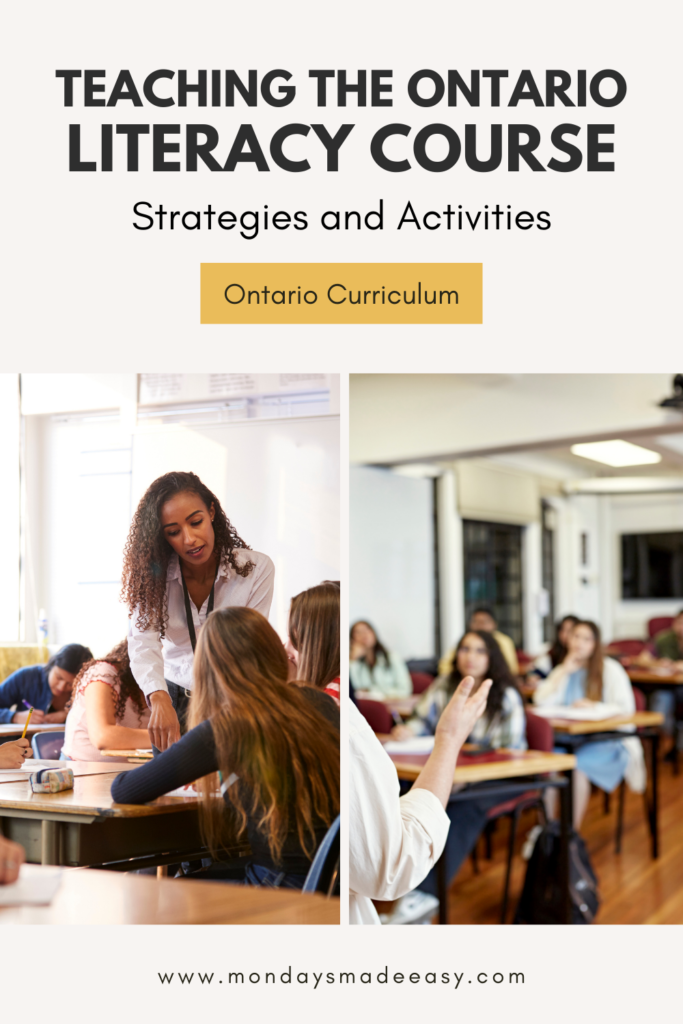
How to Teach the Ontario Literacy Course (OLC): Tying It All Together
Teaching the Ontario Literacy Course doesn’t have to be a daunting task. By incorporating the strategies and resources shared in this blog post, you can create a supportive and engaging learning environment that fosters literacy skills. Remember, the key is to stay adaptable and responsive to your students’ needs. Best of luck on your journey with this course!
Is your department or school board interested in licensing curriculum for the Ontario Literacy Course? Explore how you can provide these valuable resources to your students by clicking here.

